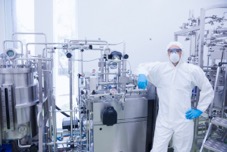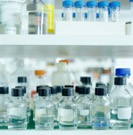August 31, 2018 -- Vaccines strengthen our immune systems by exposing white blood cells to disease-specific antigens. This builds a depot of memory T cells, so in the case of a full-on infection, our bodies can fight off malicious organisms with greater ease. Dr. Anthony S. Fauci, Director of the National Institute of Allergy and Infectious Diseases, has been working to develop an HIV vaccine for the past 30 years. This revolutionary medical tool would help reduce the dreadful effects of AIDS on the world population, for many years to come. Researchers can test a vaccine’s efficacy, post-injection, by measuring the production of antibodies. Antibodies are highly specific proteins produced by B cells and are generally found circulating within our blood. In order to quantify these microscopic proteins, researchers must use precise sample preparation techniques that separate antibodies from the other blood components. Most commonly, high-performance liquid chromatography (HPLC) is used to filter blood serum

Here at The Science Advisory Board, we want to help you understand the current outlook for HPLC and where it’s headed, so that you can make the most informed research decisions as possible. Although this technique has many applications in the fields of analytical chemistry and biochemistry, it plays an especially critical role in the pharmaceutical industry. Many pharmaceutical companies are highly dependent on research and development, and patent expiry consistently drives the need for novel drug treatments. Typically, companies utilize HPLC to test products and detect the molecular ingredients used during the manufacturing process.

HPLC is fairly mature in terms of technological advancement, as many different suppliers are currently promoting their new, highly sophisticated products. For example, Phenomenex recently debuted their bioZen series of liquid chromatography, which features new biocompatible titanium hardware and much analytical flexibility. Efforts to manufacture drugs with high purity yields, at tremendously high production volumes, will promote future technological improvements and competition among HPLC suppliers. Suppliers can successfully differentiate their initial systems, win new customers, and firmly establish their research products by developing innovative and cutting-edge products. On April 9th, Analytik announced the release of new instrumentation that combines their PlasmaQuant mass spectrometer with HPLC. Their CEO, Ulrich Krauss, succinctly described the functionality of this new instrument, “…Not only is this interesting for special analyses, but it makes an entire series of routine analyses more efficient, quicker, and more accurate.”
What are your thoughts on these developments in the HPLC sphere? Is HPLC a technique that you use for your studies? Feel free to leave a comment below!
Copyright © 2018 scienceboard.net


